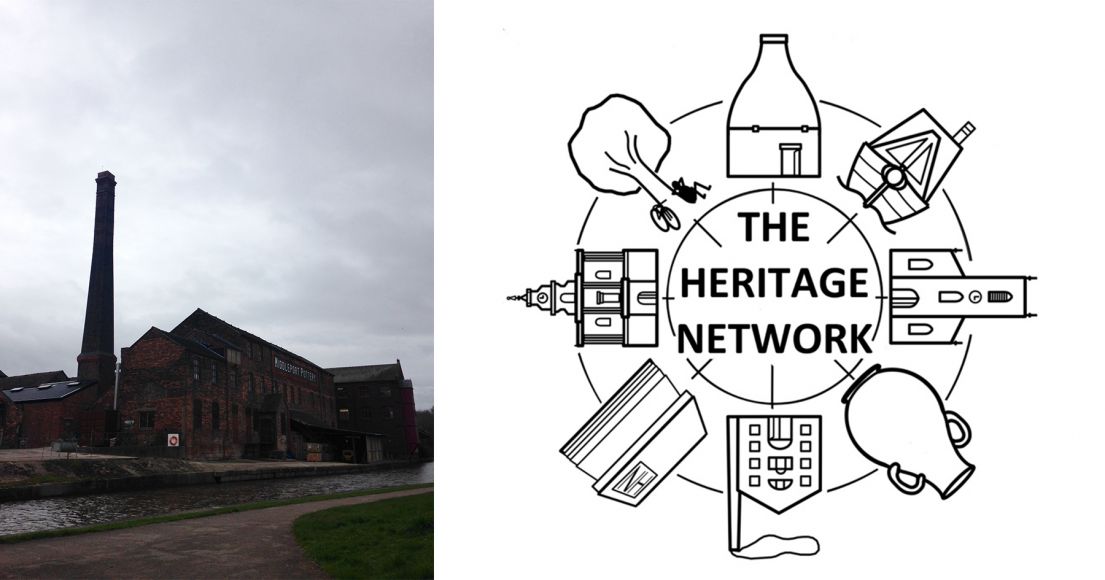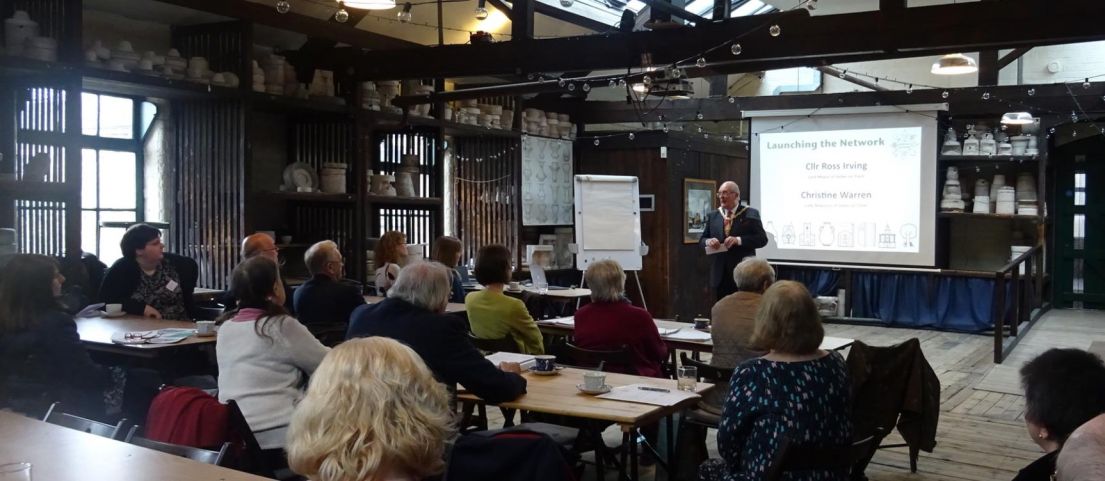
On a bright Spring morning, in a room at Middleport Pottery where Great Pottery Throw Down judge Keith Brymer Jones has been known sheds his tears, a group of museum curators, building managers and other enthusiasts launched the Heritage Network for Stoke-on-Trent.
We were delighted to have the City’s Lord Mayor along to lend his seal of approval and Heritage Open Days’ Manager, Annie Reilly, to reflect on nearly 25 years of events and an exciting future.
Bringing together representatives of the famous names and attractions of The Potteries was no easy task but these heritage practitioners know the strength of the city’s offer, and the chance to collaborate over Heritage Open Days provided the catalyst they needed.

Who’s involved and the benefits it brings
Pottery names such as Wedgwood and Spode, and our well-known attractions - The Potteries Museum in Hanley, Gladstone Pottery, Ford Green Hall and Etruria Industrial Museums - have been throwing open their doors for the national heritage festival for many years. But working together presents opportunities to:
- Programme events to avoid them clashing
- Ensure a good spread of events across the festival
- Cluster events thematically and geographically and partner up to deliver more innovative events
The Network is bolstered by the involvement of conservation organisations, ‘friends of’ groups, and those keeping our heritage buildings, churches, theatres, parks and historic narrowboats, the city’s iconic bottle ovens and canals looming large in local affections.
How it works
With around 30 different organisations on our mailing list, together with the skills and experience of all involved, it was essential that our Network remained fairly light-touch. Rather than set up yet another organisation the group settled on an informal partnership and agreed terms of reference. This laid out the criteria for membership (charitable organisations with specific aims to promote or protect the local heritage and organisations with responsibility for heritage assets such as buildings, museums and collections); frequency of meetings (bi-monthly); and how we would communicate. It also specified the Network’s aims:
- To promote awareness of and engagement with the area’s built and cultural heritage
- To be the voice for champions and keepers of heritage assets of all kinds
- To co-ordinate and collaborate in projects and events (such as Heritage Open Days)
- To share and disseminate information about heritage projects and events
- To run an effective network and ensure that associated information and finances are properly managed.
The Network has a rotating Chair, elected at the beginning of each year, and is supported by Potteries Heritage Society (the city’s civic society) who provide a secretarial role. The members take turns in hosting meetings and the council’s marketing team and other officers help promote the activities and produce leaflets. In time the Network may apply for funding for its projects, but will nominate a member to act as lead partner and treasurer.
So far things are shaping up well, with members taking part in lively meetings, and sharing good practice, resources (there is a lot of pink bunting about!) and equipment. Plans are well on course to make this year’s our biggest Heritage Open Days festival ever. As with all good networks, it’s great to be in touch with others who have been there, done that and worn the tee-shirt – and we hope that others can learn from our experience.
Find out more
- Blog - Hear more from the team and friends


